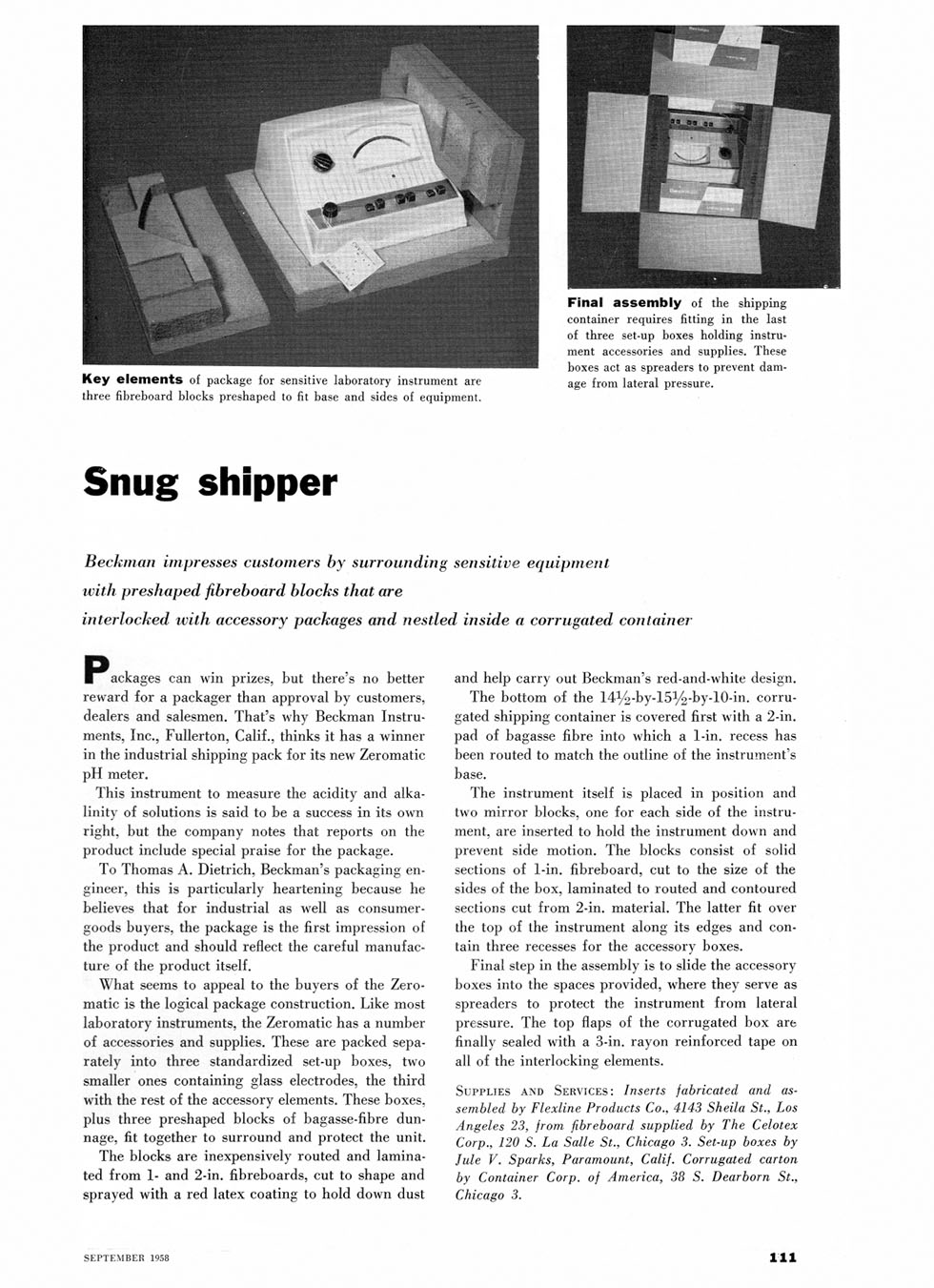


Hey elements of package for sensitive laboratory instrument are three fibreboard blocks preshaped to fit base and sides of equipment.
Final assembly of the shipping container requires fitting in the last of three set-up boxes holding instrument accessories and supplies. These boxes act as spreaders to prevent damage from lateral pressure.
Snug shipper
Beckman impresses customers by surrounding sensitive equipment with preshaped fibreboard blocks that are
interlocked with accessory packages and nestled inside a corrugated container
ackages can win prizes, but there's no better reward for a packager than approval by customers, dealers and salesmen. That's why Beckman Instruments, Inc., Fullerton, Calif., thinks it has a winner in the industrial shipping pack for its new Zeromatic pH meter.
This instrument to measure the acidity and alkalinity of solutions is said to be a success in its own right, but the company notes that reports on the product include special praise for the package.
To Thomas A. Dietrich, Beckman's packaging engineer, this is particularly heartening because he believes that for industrial as well as consumer-goods buyers, the package is the first impression of the product and should reflect the careful manufacture of the product itself.
What seems to appeal to the buyers of the Zeromatic is the logical package construction. Like most laboratory instruments, the Zeromatic has a number of accessories and supplies. These are packed separately into three standardized set-up boxes, two smaller ones containing glass electrodes, the third with the rest of the accessory elements. These boxes, plus three preshaped blocks of bagasse-fibre dunnage, fit together to surround and protect the unit.
The blocks are inexpensively routed and laminated from 1- and 2-in. fibreboards, cut to shape and sprayed with a red latex coating to hold down dust
and help carry out Beckman's red-and-white design.
The bottom of the M½-by-lS½-by-lO-in. corrugated shipping container is covered first with a 2-in. pad of bagasse fibre into which a 1-in. recess has been routed to match the outline of the instrument's base.
The instrument itself is placed in position and two mirror blocks, one for each side of the instrument, are inserted to hold the instrument down and prevent side motion. The blocks consist of solid sections of 1-in. fibreboard, cut to the size of the sides of the box, laminated to routed and contoured sections cut from 2-in. material. The latter fit over the top of the instrument along its edges and contain three recesses for the accessory boxes.
Final step in the assembly is to slide the accessory boxes into the spaces provided, where they serve as spreaders to protect the instrument from lateral pressure. The top flaps of the corrugated box are finally sealed with a 3-in. rayon reinforced tape on all of the interlocking elements.
Supplies and Services : Inserts fabricated and assembled by Flexline Products Co., 4143 Sheila St., Los Angeles 23, from fibreboard supplied by The Celotex Corp., 120 S. La Salle St., Chicago 3. Set-up boxes by Jule V. Sparks, Paramount, Calif. Corrugated carton by Container Corp. of America, 38 S. Dearborn St., Chicago 3.